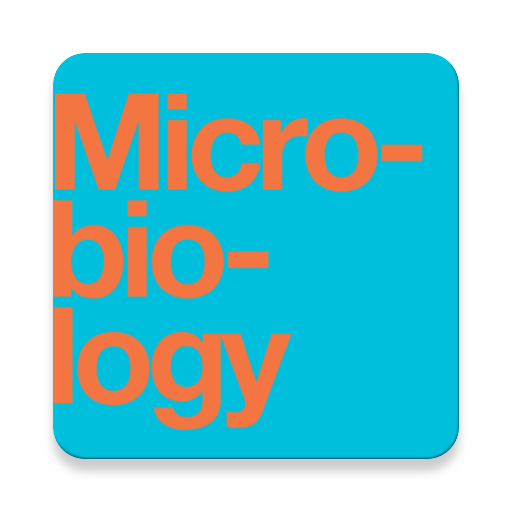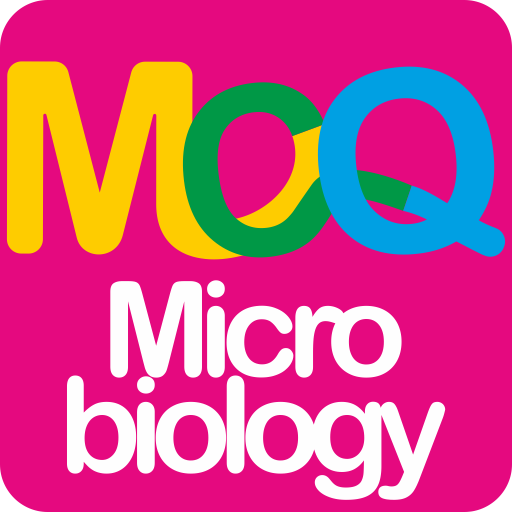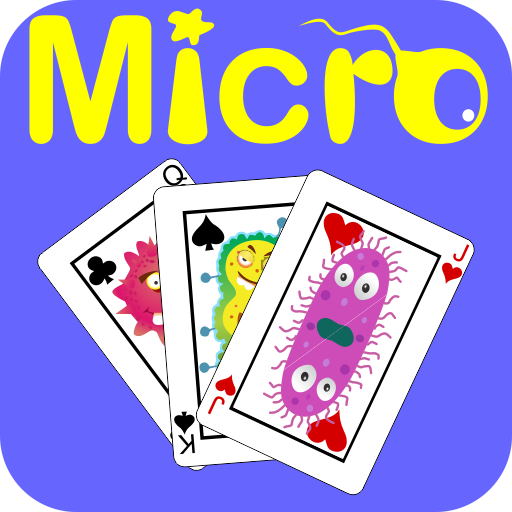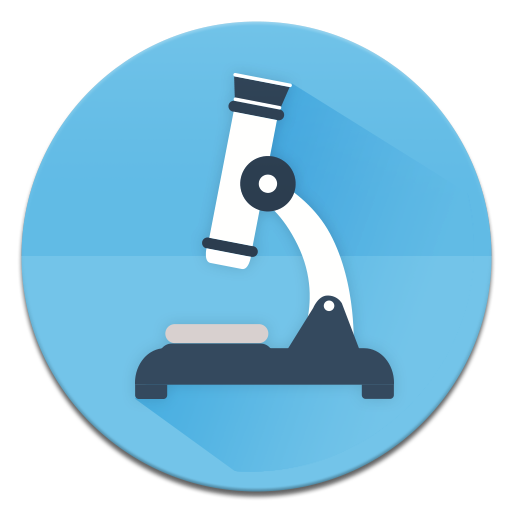

Microbiology Textbook, MCQ & Test Bank
Educational | QuizOver.com
在電腦上使用BlueStacks –受到5億以上的遊戲玩家所信任的Android遊戲平台。
Play Microbiology Textbook, MCQ & Test Bank on PC
Microbiology covers the scope and sequence requirements for a single-semester microbiology course for non-majors. The book presents the core concepts of microbiology with a focus on applications for careers in allied health. The pedagogical features of the text make the material interesting and accessible while maintaining the career-application focus and scientific rigor inherent in the subject matter. Microbiology’s art program enhances students’ understanding of concepts through clear and effective illustrations, diagrams, and photographs.
* Complete Textbook by OpenStax
* Multiple Choices Questions (MCQ)
* Essay Questions Flash Cards
* Key-Terms Flash Cards
Powered by QuizOver.com the leading online quiz creator
https://www.quizover.com
1. An Invisible World
1.1. What Our Ancestors Knew
1.2. A Systematic Approach
1.3. Types of Microorganisms
2. How We See the Invisible World
2.1. The Properties of Light
2.2. Peering Into the Invisible World
2.3. Instruments of Microscopy
2.4. Staining Microscopic Specimens
3. The Cell
3.1. Spontaneous Generation
3.2. Foundations of Modern Cell Theory
3.3. Unique Characteristics of Prokaryotic Cells
3.4. Unique Characteristics of Eukaryotic Cells
4. Prokaryotic Diversity
4.1. Prokaryote Habitats, Relationships, and Microbiomes
4.2. Proteobacteria
4.3. Nonproteobacteria Gram-Negative Bacteria and Phototrophic Bacteria
4.4. Gram-Positive Bacteria
4.5. Deeply Branching Bacteria
4.6. Archaea
5. The Eukaryotes of Microbiology
5.1. Unicellular Eukaryotic Parasites
5.2. Parasitic Helminths
5.3. Fungi
5.4. Algae
5.5. Lichens
6. Acellular Pathogens
6.1. Viruses
6.2. The Viral Life Cycle
6.3. Isolation, Culture, and Identification of Viruses
6.4. Viroids, Virusoids, and Prions
7. Microbial Biochemistry
7.1. Organic Molecules
7.2. Carbohydrates
7.3. Lipids
7.4. Proteins
7.5. Using Biochemistry to Identify Microorganisms
8. Microbial Metabolism
8.1. Energy, Matter, and Enzymes
8.2. Catabolism of Carbohydrates
8.3. Cellular Respiration
8.4. Fermentation
8.5. Catabolism of Lipids and Proteins
8.6. Photosynthesis
8.7. Biogeochemical Cycles
9. Microbial Growth
9.1. How Microbes Grow
9.2. Oxygen Requirements for Microbial Growth
9.3. The Effects of pH on Microbial Growth
9.4. Temperature and Microbial Growth
9.5. Other Environmental Conditions that Affect Growth
9.6. Media Used for Bacterial Growth
10. Biochemistry of the Genome
10.1. Using Microbiology to Discover the Secrets of Life
10.2. Structure and Function of DNA
10.3. Structure and Function of RNA
10.4. Structure and Function of Cellular Genomes
11. Mechanisms of Microbial Genetics
11.1. The Functions of Genetic Material
11.2. DNA Replication
11.3. RNA Transcription
11.4. Protein Synthesis (Translation)
11.5. Mutations
11.6. How Asexual Prokaryotes Achieve Genetic Diversity
11.7. Gene Regulation: Operon Theory
12. Modern Applications of Microbial Genetics
12.1. Microbes and the Tools of Genetic Engineering
12.2. Visualizing and Characterizing DNA, RNA, and Protein
12.3. Whole Genome Methods and Pharmaceutical Applications of Genetic Engineering
12.4. Gene Therapy
13. Control of Microbial Growth
14. Antimicrobial Drugs
15. Microbial Mechanisms of Pathogenicity
16. Disease and Epidemiology
17. Innate Nonspecific Host Defenses
18. Adaptive Specific Host Defenses
19. Diseases of the Immune System
20. Laboratory Analysis of the Immune Response
21. Skin and Eye Infections
22. Respiratory System Infections
23. Urogenital System Infections
24. Digestive System Infections
25. Circulatory and Lymphatic System Infections
26. Nervous System Infections
* Complete Textbook by OpenStax
* Multiple Choices Questions (MCQ)
* Essay Questions Flash Cards
* Key-Terms Flash Cards
Powered by QuizOver.com the leading online quiz creator
https://www.quizover.com
1. An Invisible World
1.1. What Our Ancestors Knew
1.2. A Systematic Approach
1.3. Types of Microorganisms
2. How We See the Invisible World
2.1. The Properties of Light
2.2. Peering Into the Invisible World
2.3. Instruments of Microscopy
2.4. Staining Microscopic Specimens
3. The Cell
3.1. Spontaneous Generation
3.2. Foundations of Modern Cell Theory
3.3. Unique Characteristics of Prokaryotic Cells
3.4. Unique Characteristics of Eukaryotic Cells
4. Prokaryotic Diversity
4.1. Prokaryote Habitats, Relationships, and Microbiomes
4.2. Proteobacteria
4.3. Nonproteobacteria Gram-Negative Bacteria and Phototrophic Bacteria
4.4. Gram-Positive Bacteria
4.5. Deeply Branching Bacteria
4.6. Archaea
5. The Eukaryotes of Microbiology
5.1. Unicellular Eukaryotic Parasites
5.2. Parasitic Helminths
5.3. Fungi
5.4. Algae
5.5. Lichens
6. Acellular Pathogens
6.1. Viruses
6.2. The Viral Life Cycle
6.3. Isolation, Culture, and Identification of Viruses
6.4. Viroids, Virusoids, and Prions
7. Microbial Biochemistry
7.1. Organic Molecules
7.2. Carbohydrates
7.3. Lipids
7.4. Proteins
7.5. Using Biochemistry to Identify Microorganisms
8. Microbial Metabolism
8.1. Energy, Matter, and Enzymes
8.2. Catabolism of Carbohydrates
8.3. Cellular Respiration
8.4. Fermentation
8.5. Catabolism of Lipids and Proteins
8.6. Photosynthesis
8.7. Biogeochemical Cycles
9. Microbial Growth
9.1. How Microbes Grow
9.2. Oxygen Requirements for Microbial Growth
9.3. The Effects of pH on Microbial Growth
9.4. Temperature and Microbial Growth
9.5. Other Environmental Conditions that Affect Growth
9.6. Media Used for Bacterial Growth
10. Biochemistry of the Genome
10.1. Using Microbiology to Discover the Secrets of Life
10.2. Structure and Function of DNA
10.3. Structure and Function of RNA
10.4. Structure and Function of Cellular Genomes
11. Mechanisms of Microbial Genetics
11.1. The Functions of Genetic Material
11.2. DNA Replication
11.3. RNA Transcription
11.4. Protein Synthesis (Translation)
11.5. Mutations
11.6. How Asexual Prokaryotes Achieve Genetic Diversity
11.7. Gene Regulation: Operon Theory
12. Modern Applications of Microbial Genetics
12.1. Microbes and the Tools of Genetic Engineering
12.2. Visualizing and Characterizing DNA, RNA, and Protein
12.3. Whole Genome Methods and Pharmaceutical Applications of Genetic Engineering
12.4. Gene Therapy
13. Control of Microbial Growth
14. Antimicrobial Drugs
15. Microbial Mechanisms of Pathogenicity
16. Disease and Epidemiology
17. Innate Nonspecific Host Defenses
18. Adaptive Specific Host Defenses
19. Diseases of the Immune System
20. Laboratory Analysis of the Immune Response
21. Skin and Eye Infections
22. Respiratory System Infections
23. Urogenital System Infections
24. Digestive System Infections
25. Circulatory and Lymphatic System Infections
26. Nervous System Infections
在電腦上遊玩Microbiology Textbook, MCQ & Test Bank . 輕易上手.
-
在您的電腦上下載並安裝BlueStacks
-
完成Google登入後即可訪問Play商店,或等你需要訪問Play商店十再登入
-
在右上角的搜索欄中尋找 Microbiology Textbook, MCQ & Test Bank
-
點擊以從搜索結果中安裝 Microbiology Textbook, MCQ & Test Bank
-
完成Google登入(如果您跳過了步驟2),以安裝 Microbiology Textbook, MCQ & Test Bank
-
在首頁畫面中點擊 Microbiology Textbook, MCQ & Test Bank 圖標來啟動遊戲



